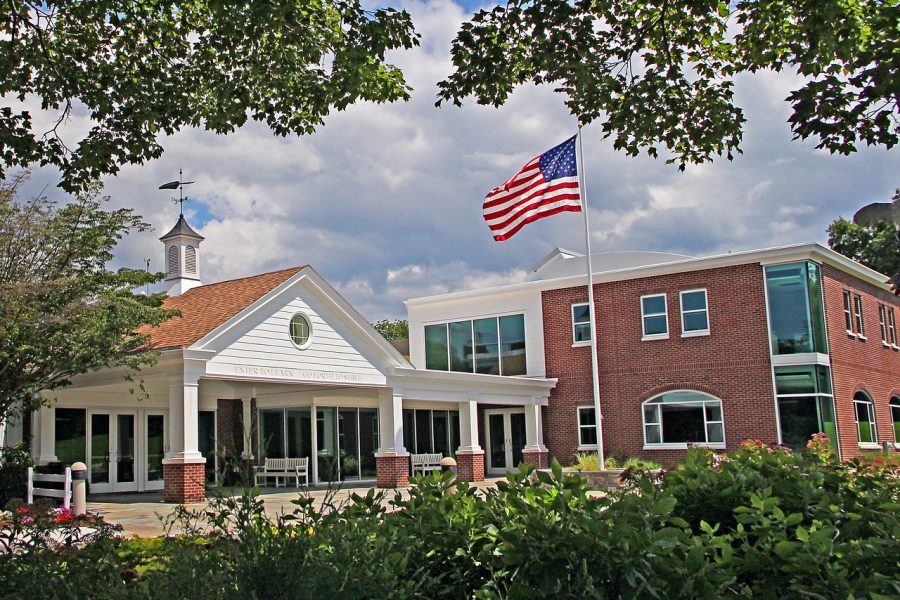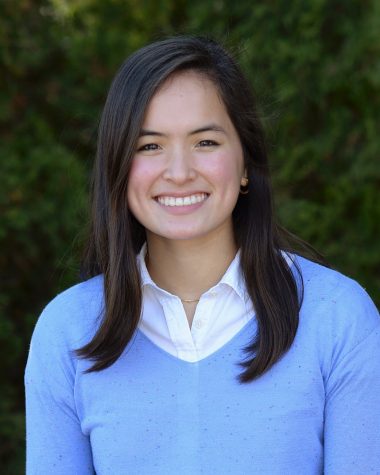St. Luke’s Transitions to Online Learning, Community Spirit Prevails
March 18, 2020
As the novel Coronavirus (COVID-19) has quickly grown into a global pandemic, schools and universities across the world have hastened to curb its spread by transitioning to online classes.
On Wednesday, March 11, St. Luke’s announced its plans to move to distance learning. While no cases of COVID-19 have been reported in the St. Luke’s community, the administration cancelled in-person classes in order to minimize risk of exposure to the highly contagious disease. It is unclear if St. Luke’s will return to campus after spring break, but Teach Tech’s faculty training sessions and Friday’s practice day successfully equipped the community for the possibility of extended online learning.
Thankfully, St. Luke’s was well-prepared for this transition. SLS administrators, deans, and Information Technology officials worked together to create a Distance Learning Plan (DLP) which could best preserve our community spirit, values, and commitment to exceptional education. Through the DLP, students will attend classes on Zoom, a video conferencing app.
On March 10, Head of Upper School Ms. Perry explained the objectives of the DLP in a community webinar, sharing that “the goals of the Distance Learning Plan are, number one, to maintain continuity. We want teachers and students to still have their same relationships, still have students in their same courses.”
Ms. Perry hopes St. Luke’s can be a source of comfort and stability in these alarming times.
“If school were to close, a lot of things in [students’] world may feel unstructured or even concerning to them. We want school to be that consistent home base that continues through a period of . . . campus closure,” Perry explained.
With a seven-person Information Technology team, advanced audio/visual equipment, and a substantial tech budget, St. Luke’s is fortunate to have the resources to successfully execute the DLP.
The school’s IT department (“Teach Tech”) was tasked with preparing teachers and students for the transition to remote learning. According to Academic Technologists Mr. Bavone and Ms. Mathrani, Teach Tech had three main goals to accomplish before the DLP’s launch: deciding which software to use, training teachers and students to use the technology, and equipping students with proper equipment and hardware.
Teach Tech quickly realized that 5th and 6th graders’ Chromebooks did not have microphones or cameras suitable to the online learning platform, so the department ordered next year’s Chromebooks early. Systems Support administrators Mr. D’Agostin and Mr. Clarke worked tirelessly to assign the new devices to the Middle Schoolers and install the proper applications for them.
While searching for a platform for SLS’s online classes, Teach Tech chose Zoom because of its unique features and capacity for administrative support. On Zoom, teachers can share their screens with students and even mirror the screen of an external device connected through a USB cord. This feature is especially useful for STEM teachers, whose subject matter requires handwritten material. Thus, Teach Tech gave each math and science teacher an iPad to use as a digital whiteboard. In addition, if teachers experience technical difficulties during their classes, IT staff members can easily assist them by joining their virtual classroom, observing the meeting settings, and fixing the issue while teachers continue their instruction.
To acclimate teachers to the new technology, Teach Tech facilitated training sessions throughout Upper School Exam Week. The main objective of these trainings was to ensure teachers were comfortable with Zoom so that they could focus on teaching and interacting with students.
“We wanted to make them feel in control in their virtual classroom, the same way that they feel in the classroom, by not having to worry about the little things about using the platform,” Ms. Mathrani commented.
Teach Tech even offered individual help to teachers who needed extra assistance or had specific questions, allowing teachers with varying technological expertise to feel confident with the new format.
“If someone wasn’t comfortable with the group setting where they feel like they might fall behind, or they feel like they have specific questions, they were able to work with us one-on-one . . . Some teachers needed twenty minutes, and some teachers needed to come back a couple times, and we’re there to work with all levels of skill, just like we are with the students. So we’re happy to accommodate,” Mr. Bavone shared.
On Friday, March 13, the St. Luke’s community participated in a distance learning practice day. From 8:30am to 3:00pm, students attended a full day of classes on Zoom, learning about the technology while teachers practiced their new virtual pedagogy.
Classes ranged from brief “check-ins” to full lessons, and several teachers, including math teacher Mr. Kress, utilized creative online collaboration to simulate their real classrooms. One of Mr. Kress’s top priorities was to determine how students could submit handwritten homework assignments. Mr. Kress’s classes took pictures of their work and uploaded them into a Google Doc, which he could view almost instantly.
French teacher Mr. Shee taught a full lesson in each of his five classes, using screen-sharing and Breakout Rooms to continue his curriculum and create an engaging classroom experience.
“My students watched a current news clip . . . and then discussed it afterwards, incorporating new, relevant vocabulary,” Mr. Shee shared. “We used the ‘breakout rooms’ feature in Zoom to have them discuss their vacation plans . . . using the future tense and past conditional mood.”
Students noticed that the day seemed relaxed and fun — to be expected, considering Friday marked the end of Exam Week. The laid-back atmosphere helped quell any anxiety surrounding the global health crisis.
“It was honestly just an entertaining day because everyone was very relaxed after finishing exams. There was a sense of relief,” Cate Mathews ‘21 recalled. “Teachers were very comforting . . . people were kind of having fun with it, joking around, using the green screen to put on funny backgrounds and things. So people were just having fun with it, which was nice and I think was the right tone for the day.”
But, as is the case with major changes, distance learning presented its share of challenges. Students reported that it was difficult to focus on schoolwork at home.
“They always say ‘Don’t do homework in your bed,’ or even in your room sometimes, because it’s hard for your brain to separate sleep and school and working,” Mathews observed. “So I think it’s kind of a challenge to really focus and be in ‘school mode’ when you’re at your house, even if you’re not in your bed or in your room.”
In addition, students noticed that online class cannot replicate classrooms’ organically vibrant environments.
“The little things that you think about when you’re taking classes, you don’t think about how they’ll go away when you’re in online class . . . anytime you think of something funny and you go to the person next to you and talk about it . . . and then online classes, you kind of just sit there in silence and you only raise your hand when you have a question or you want to say something. So in that sense, the unifying and kind of fun atmosphere that most classes bring kind of goes away on online classes,” Jillian Fisher ‘21 commented.
At this point, school officials cannot determine if online learning will continue after spring break. Should campus remain closed, Mr. Bavone trusts that extra practice will help teachers translate their lively classroom environments to Zoom.
“With our teachers getting more comfortable with the software and some time to practice over the break . . . they’ll really be able to bring that feeling of their classroom into it. We’re going to work on bending our pedagogy to something that makes sense. And I think the sense of community will hopefully remain in these trying times,” Bavone reflected.
Now, students are faced with uncertainty, as COVID-19 has forced the nation into relative isolation. While social distancing may seem boring and monotonous, English teacher Ms. Doran compelled students to use the extra time at home to grow as learners and thinkers.
“This is a historic moment: use it to build character, discipline, compassion and intellect,” Doran urged. “Learn more about the socio-political-economic structure of our country through responsible journalism. Read, read, read. Enrich your mind, heart and imagination. There is life—beautiful and endlessly surprising—not virtual reality—in your future.”
History teacher Mr. Martin acknowledged that remaining in online classes would certainly be a difficult adjustment, but it is an option that our school community is fortunate to have.
“With each passing day, it’s increasingly clear just how well-positioned we are at St. Luke’s to respond to and surmount the obstacles presented by this crisis — both in terms of the material support for distance learning, and . . . even more importantly, the strength of the relationships that exist among students and faculty within the St. Luke’s community,” Martin reflected.
No matter what happens, Martin added, students should take comfort in the knowledge that the unique camaraderie that exists at St. Luke’s continues to unite us, even when we are away from campus.
“We are in this together, whether locally or globally; that’s becoming more apparent with each passing hour. Working together is how we will meet whatever challenges lie ahead. And though we may be in isolation at present, we remain very much ’together’ on the Hilltop.”




